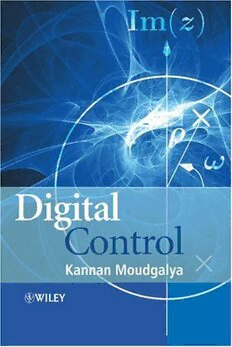
Digital control PDF
554 Pages·2007·4.712 MB·English
Most books are stored in the elastic cloud where traffic is expensive. For this reason, we have a limit on daily download.
Preview Digital control
Description:
Digital control systems are becoming increasingly prevalent and important within industry. In recent years significant progress has been made in their analysis and design – particularly within the areas of microprocessors and digital signal processors. The traditional approach to teaching digital control assumes an understanding of analog control theory; Digital Control , however, teaches the fundamentals of the topics, assuming no prior knowledge of control engineering. Organised into five sections, it discusses modelling, signal processing and identification of plants from measurements, as well as the transfer function approach to, and state space techniques for, control design. Teaches the fundamentals of digital control, enabling the student to exploit the complete potential of digital systems. Presents a number of control techniques including proportional-integral-derivative (PID), pole placement, internal model, minimum variance, model predictive and linear quadratic Gaussian control and their extensions. Provides an extensive introduction to digital signal processing, an essential component to the understanding and implementation of digital controllers; and to the identification of plant models, an important topic in this information era. Includes examples, problems and solutions as well as accompanying MatLAB code. Digital Control offers an advanced and self-contained textbook to senior undergraduates and postgraduates in chemical, electrical and mechanical engineering and computer science. It will also appeal to practicing systems engineers who need to learn digital control.
See more
The list of books you might like
Most books are stored in the elastic cloud where traffic is expensive. For this reason, we have a limit on daily download.
